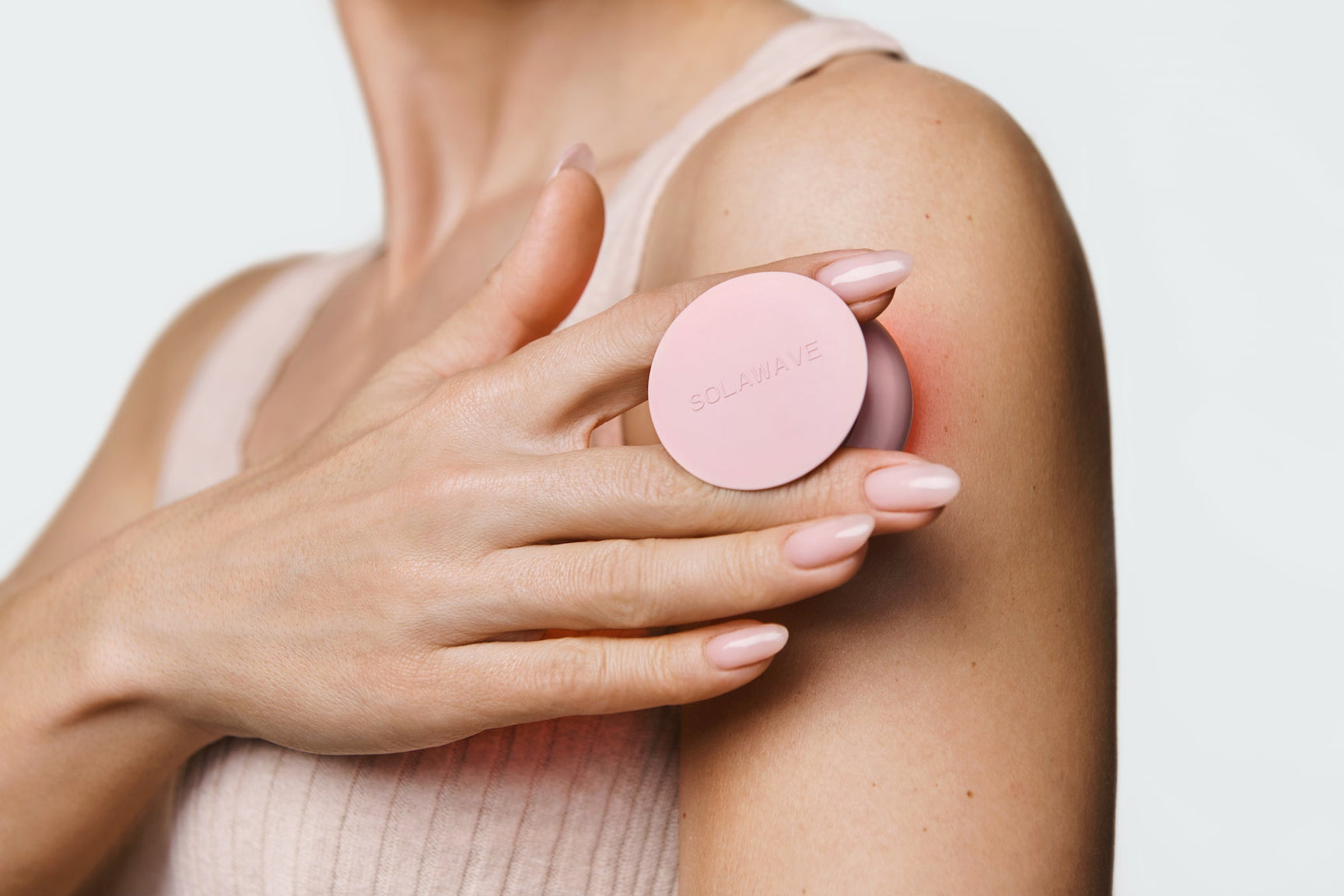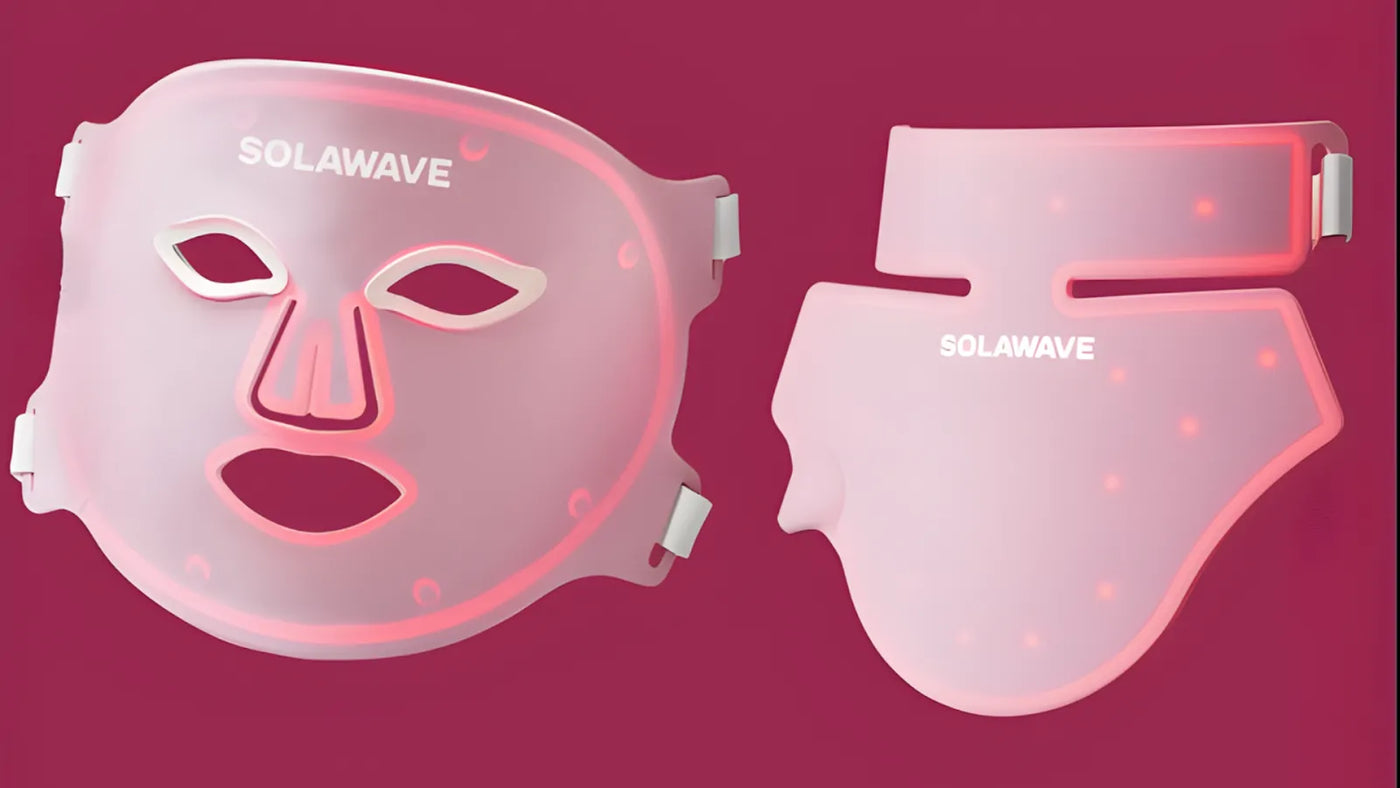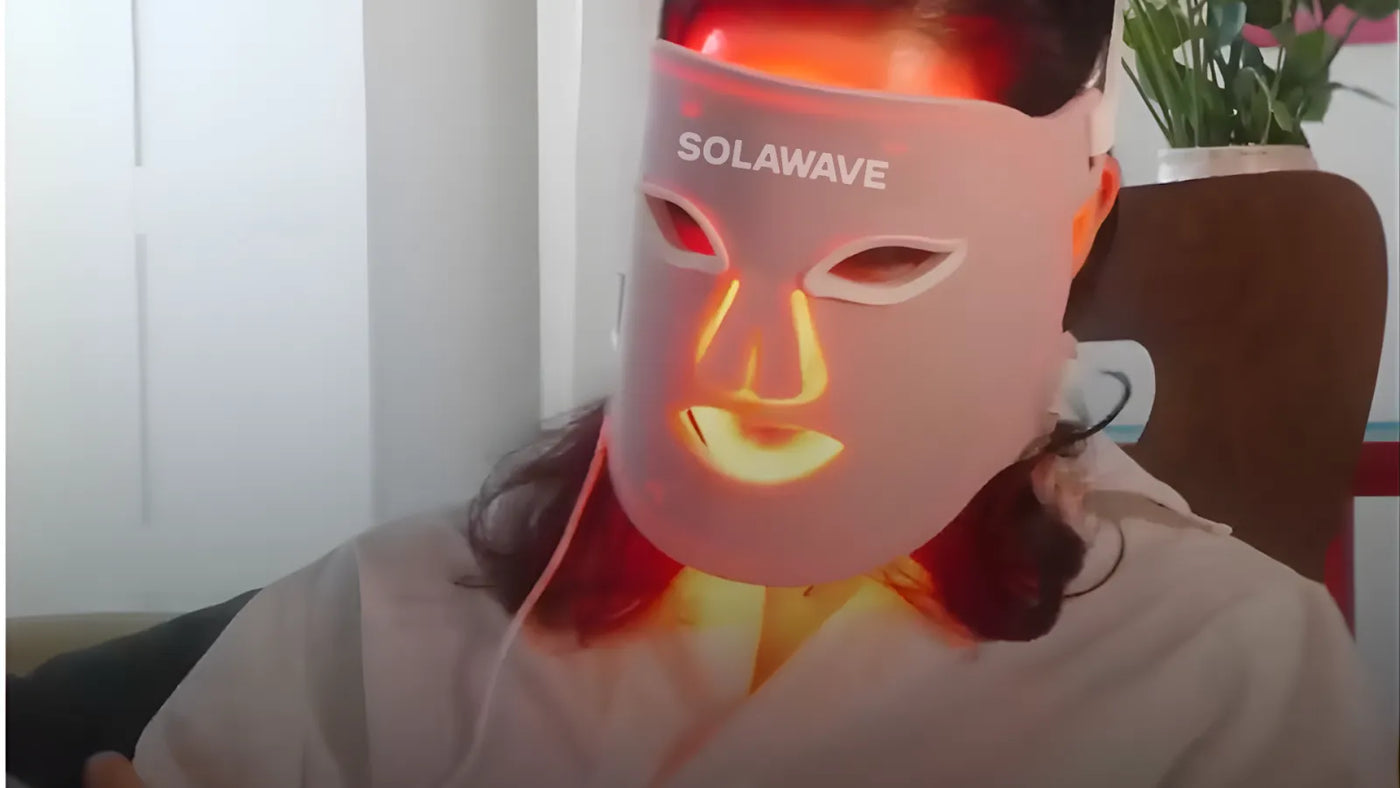

Red Light Therapy For Muscle Recovery: What the Research Says
Red light therapy has quickly gained attention in the world of fitness and wellness, with many athletes and everyday exercisers turning to this technology to support muscle recovery. But what does the science actually say about its effectiveness? In this article, you’ll get a clear, research-based look at how red light therapy may help with muscle recovery, based on the latest studies and clinical evidence.
Before we get started: it’s important to note that this article is focused solely on the use of red light therapy for muscle recovery—not skincare or other applications. The devices designed for muscle recovery are different from those made for skincare, and the benefits do not cross over between these types. If you’re considering red light therapy for muscle recovery, you need to use a device specifically engineered for that purpose to see results. Let’s dive into what the research reveals about this promising approach.
What Is Red Light Therapy?
Red light therapy is a non-invasive treatment that uses specific wavelengths of red and near-infrared light to stimulate cellular processes in your body. Unlike ultraviolet (UV) light, which can damage your skin, red light therapy uses wavelengths that are safe and penetrate deeper into your tissues without causing harm. This technology is also known as photobiomodulation, a term that describes how light energy can influence biological systems at the cellular level.
When you use red light therapy, the light penetrates your skin and is absorbed by the mitochondria, the energy-producing structures inside your cells. Mitochondria play a key role in generating adenosine triphosphate (ATP), which is the main energy currency of your cells. By enhancing mitochondrial function, red light therapy can help your cells produce more ATP, which may support faster recovery, reduce inflammation, and improve overall cellular health.
Wavelengths are a key concept in understanding how red light therapy works. Wavelengths are measured in nanometers (nm), and different wavelengths penetrate the body to different depths and trigger different biological responses. For muscle recovery, the most effective wavelengths are typically in the red and near-infrared ranges. These wavelengths are able to reach deeper tissues, such as muscles and joints, making them ideal for recovery and repair.
How Does Red Light Therapy Work for Muscle Recovery?
Red light therapy supports muscle recovery through several interconnected biological mechanisms that go beyond simply energizing your cells. When you use a device designed for muscle recovery, the light penetrates deep into your muscle tissue and triggers a series of beneficial responses at the cellular and tissue levels.
One of the primary effects is the increase in adenosine triphosphate (ATP) production. ATP is the molecule that fuels nearly every cellular activity, including muscle contraction and repair. After intense exercise, your muscles need more ATP to rebuild and recover. By stimulating the mitochondria, red light therapy helps your cells generate ATP more efficiently, giving your muscles the energy they need to repair microtears and recover from fatigue.
Another key mechanism is the reduction of oxidative stress. During strenuous exercise, your body produces reactive oxygen species (ROS), which are unstable molecules that can damage cells and slow down recovery. Red light therapy has been shown to help balance ROS levels, reducing cellular damage and inflammation. This means your muscles experience less soreness and recover more quickly after workouts.
Enhanced blood flow is also a benefit of red light therapy for muscle recovery. The therapy encourages the release of nitric oxide, a molecule that relaxes blood vessels and improves circulation. Better blood flow means more oxygen and nutrients are delivered to your muscles, while waste products like lactic acid are removed more efficiently. This process supports faster healing and reduces the risk of lingering muscle stiffness.
Together, these three mechanisms create an environment where your muscles can recover faster and more completely. This is why many athletes and active individuals turn to red light therapy as a science-backed tool to support their training and recovery routines. (Remember, these benefits are only achieved with devices specifically engineered for muscle recovery, not those intended for skincare or other uses.)
Red Light Therapy for Muscle Recovery: Review of Key Research Studies
Scientific research on red light therapy for muscle recovery has grown rapidly in recent years, with multiple studies examining its effectiveness and underlying mechanisms. To help you understand what the evidence actually shows, here’s a summary of key research findings from clinical trials and reviews. Each study highlights how red light therapy, when used with the right device, may support faster recovery, reduced soreness, and improved muscle performance.
Study 1: Effects on Muscle Performance and Recovery (PMC5167494)
Ferraresi C, Huang YY, Hamblin MR. Photobiomodulation in human muscle tissue: an advantage in sports performance?. J Biophotonics. 2016;9(11-12):1273-1299. doi:10.1002/jbio.201600176
This review, published in the Journal of Biophotonics which focuses on interactions between light and biological processes, explored how red light therapy impacts muscle performance and recovery in healthy individuals.
Researchers conducted a comprehensive review of clinical trials and studies examining the effects of red or near-infrared (NIR) light on muscle performance and recovery in both athletes and non-athletes. The review included 46 studies with a total of 1,045 participants, ranging from healthy, untrained individuals to elite athletes. Light therapy was applied either before or after exercise, using a variety of devices such as single laser probes, clusters of laser diodes, LED arrays, and combinations of lasers and LEDs.
The studies measured a range of performance and recovery metrics, including fatigue, number of repetitions, muscle torque, hypertrophy, creatine kinase levels, and delayed onset muscle soreness. The findings showed that red and near-infrared light therapy can enhance muscle mass gained after training, reduce inflammation, and decrease oxidative stress in muscle tissue. These benefits were observed across different types of light therapy devices and light sources, using both red and near-infrared wavelengths.
The review also raised important questions about whether light therapy should be permitted in athletic competition, given its potential to improve sports performance.
Study 2: Photobiomodulation and Muscle Recovery (PubMed 33273302)
Padoin S, Zeffa AC, Molina Corrêa JC, et al. Phototherapy Improves Muscle Recovery and Does Not Impair Repeated Bout Effect in Plyometric Exercise. J Strength Cond Res. 2022;36(12):3301-3310. doi:10.1519/JSC.0000000000003895
This study investigated how photobiomodulation—using red (630 nm) and near-infrared (940 nm) light—affects muscle recovery and adaptation after intense plyometric exercise.
Twenty-eight healthy men were randomly assigned to receive either red or near-infrared light therapy, or a placebo, before performing a demanding series of 100 drop-jumps. Researchers measured markers of muscle damage (creatine kinase), muscle soreness (DOMS), and performance (squat jump and countermovement jump) before and after exercise, as well as during recovery.
The results showed that both red and near-infrared light therapy, when applied before exercise, helped reduce muscle damage compared to placebo. Specifically, creatine kinase levels—a key indicator of muscle damage—were significantly lower in the near-infrared group 72 hours after exercise. The red light group also showed improved squat jump performance at 24 hours, and the near-infrared group at 48 hours, compared to placebo. However, there were no significant differences between groups in muscle soreness or countermovement jump performance.
Importantly, when participants repeated the exercise two weeks later without any light therapy, there was no difference in recovery between groups, indicating that the therapy did not interfere with the body’s natural adaptation to repeated exercise. Overall, this study suggests that red light therapy and near-infrared light therapy can help reduce muscle damage and support performance recovery after intense exercise, without hindering long-term muscle adaptation.
Study 3: Systematic Review of Red Light Therapy for Muscle Recovery (PMC9159724)
D'Amico A, Silva K, Rubero A, Dion S, Gillis J, Gallo J. The Influence of Phototherapy on Recovery From Exercise-Induced Muscle Damage. Int J Sports Phys Ther. 2022;17(4):658-668. Published 2022 Jun 1. doi:10.26603/001c.34422
This study evaluated the effectiveness of phototherapy on muscle recovery after intense sprinting exercises designed to cause muscle damage.
Thirty-three participants completed a high-volume sprint protocol, then were divided into two groups: one received phototherapy before each testing session, while the other received a sham treatment as a control. Researchers measured vertical jump, agility, and perceptions of muscle soreness in the calves, hamstrings, quadriceps, and overall, over five days of recovery.
The results showed that phototherapy significantly reduced calf soreness compared to the control group. However, there were no significant differences between the groups in terms of vertical jump performance, agility, or soreness in other muscle groups.
Overall, the findings suggest that while phototherapy may help reduce soreness in specific muscles like the calves after exercise-induced muscle damage, it does not appear to enhance recovery or performance in explosive, short-duration activities. This indicates that the benefits of red light therapy for muscle recovery may be limited depending on the type of activity and the muscle groups involved.
Study 4: Red Light Therapy and Exercise-Induced Muscle Damage (PMC5026559)
Ferraresi C, Bertucci D, Schiavinato J, et al. Effects of Light-Emitting Diode Therapy on Muscle Hypertrophy, Gene Expression, Performance, Damage, and Delayed-Onset Muscle Soreness: Case-control Study with a Pair of Identical Twins. Am J Phys Med Rehabil. 2016;95(10):746-757. doi:10.1097/PHM.0000000000000490
This case-control study explored how light-emitting diode therapy (a form of red and near-infrared light therapy) affects muscle recovery and performance during a 12-week strength training program. The research involved a pair of male identical twins, with one receiving light therapy and the other a placebo after each training session targeting the quadriceps muscles.
The results showed that the twin who received light therapy experienced greater improvements in maximal strength, reduced fatigue, and lower levels of muscle damage markers such as creatine kinase compared to the placebo group. Muscle soreness was also lower in the light therapy group. Additionally, gene expression analysis revealed that light therapy reduced inflammation and muscle atrophy markers, while increasing markers related to protein synthesis, oxidative stress defense, and muscle growth.
Overall, this study suggests that red and near-infrared light therapy can help reduce muscle damage, pain, and atrophy, while also supporting muscle growth, faster recovery, and improved athletic performance when combined with a structured strength training program. These benefits highlight the potential of using properly designed light therapy devices as part of rehabilitation and sports medicine routines.
What Type of Red Light Therapy Device Is Needed for Muscle Recovery?
To experience the benefits of red light therapy for muscle recovery, you need a device specifically engineered for this purpose. Not all devices are created equal, and some devices simply do not deliver the power, wavelengths, or coverage needed to reach deeper muscle tissues.
When choosing a device for muscle recovery, pay attention to these key specifications:
-
Wavelength: Look for devices that emit light in the red (typically 630–660 nm) and near-infrared (810–850 nm) ranges. These wavelengths penetrate deeply enough to affect muscle tissue and support recovery.
-
Power Density: Effective muscle recovery devices provide a higher power density (measured in mW/cm²), ensuring enough energy reaches your muscles. Aim for a device that offers at least 50–100 mW/cm² at the treatment surface.
-
Treatment Area: Larger panels or flexible arrays are ideal for covering bigger muscle groups, while smaller devices may be suitable for targeted areas. Make sure the device can treat the muscle groups you want to target efficiently.
Remember, red light therapy skincare devices are not suitable for muscle recovery, and muscle recovery devices are not intended for skincare. Always check the manufacturer’s specifications and intended use before purchasing. For best results, choose a device that is clinically tested for muscle recovery, offers the right wavelengths and power density, and is large enough to treat the areas you need.
Conclusion
Research shows that red light therapy can support muscle recovery by reducing muscle damage, inflammation, and soreness, while also promoting strength gains and faster healing. These benefits are only achieved when you use a device specifically designed for muscle recovery, as skincare devices do not provide the necessary wavelengths or power. Always ensure you’re using the right tool for your goals, and consult with a healthcare professional before adding red light therapy to your recovery routine to make sure it’s safe and effective for your needs.
Disclaimer: This article is intended for informational purposes only and should not be interpreted as medical advice or guidance. Always seek medical advice and care from a trusted healthcare professional.
Sources:
-
Ultraviolet (UV) Radiation: What It Is & Its Effect on Your Skin
-
Photobiomodulation in human muscle tissue: an advantage in sports performance? - PMC
-
The Influence of Phototherapy on Recovery From Exercise-Induced Muscle Damage - PMC





















